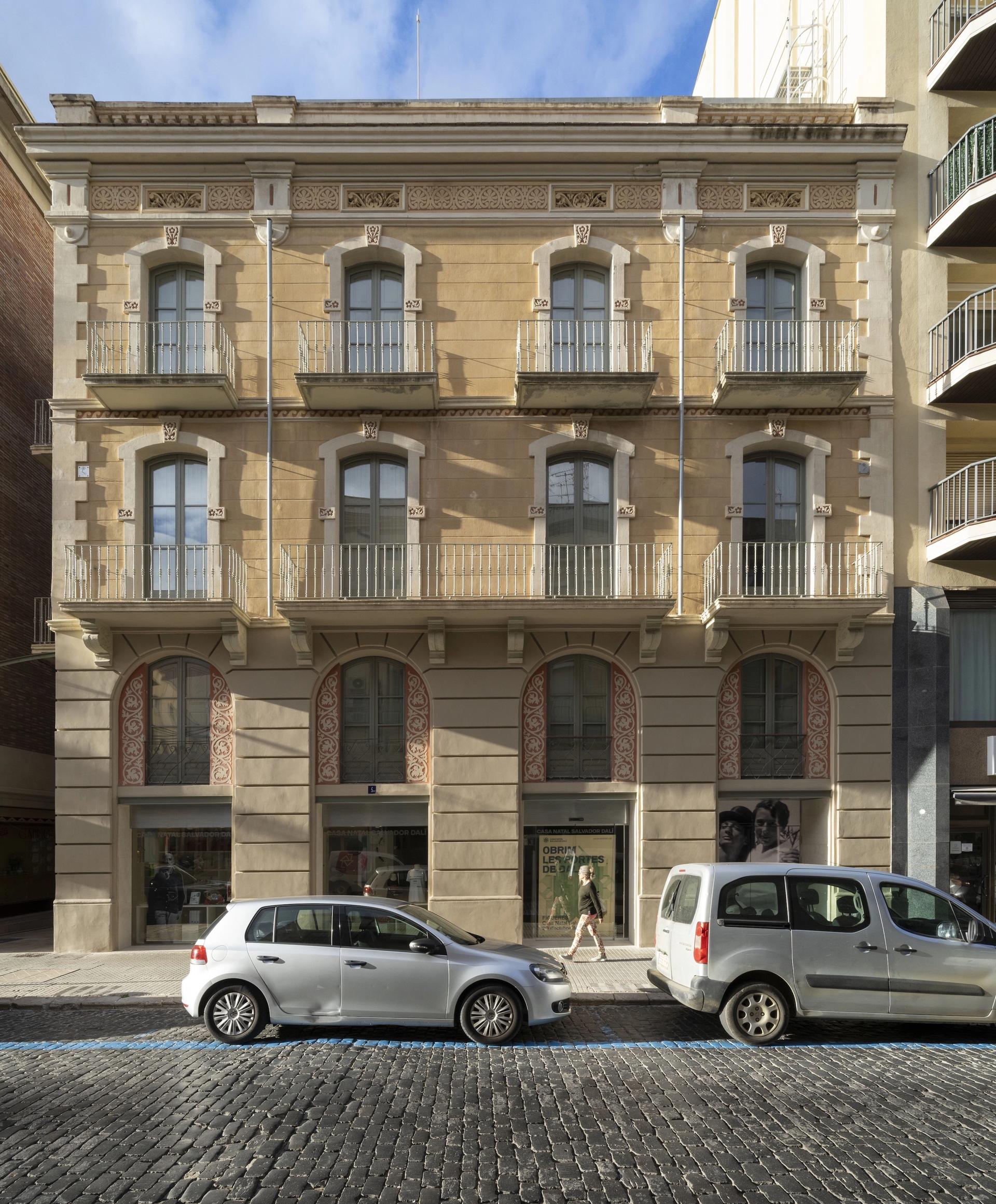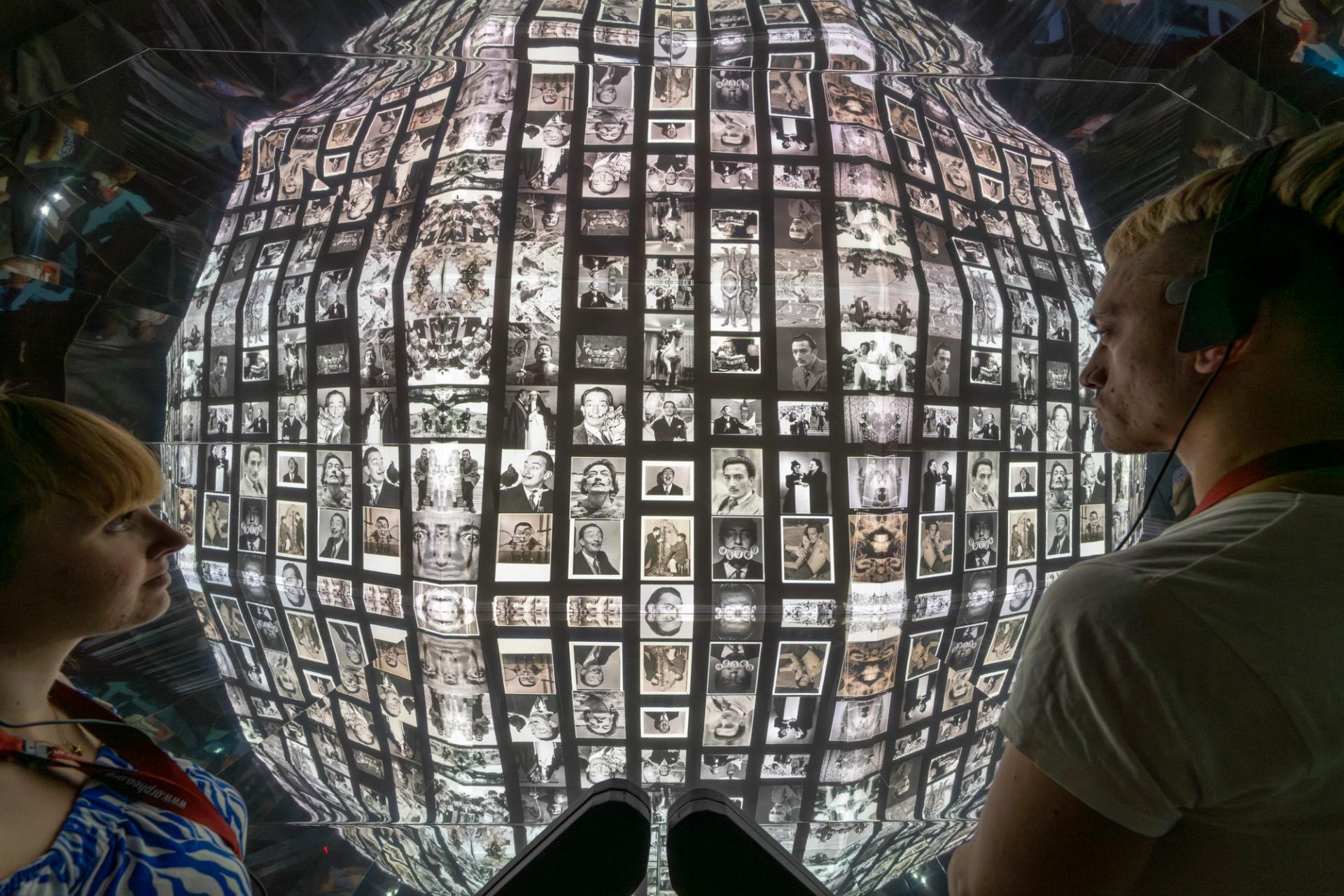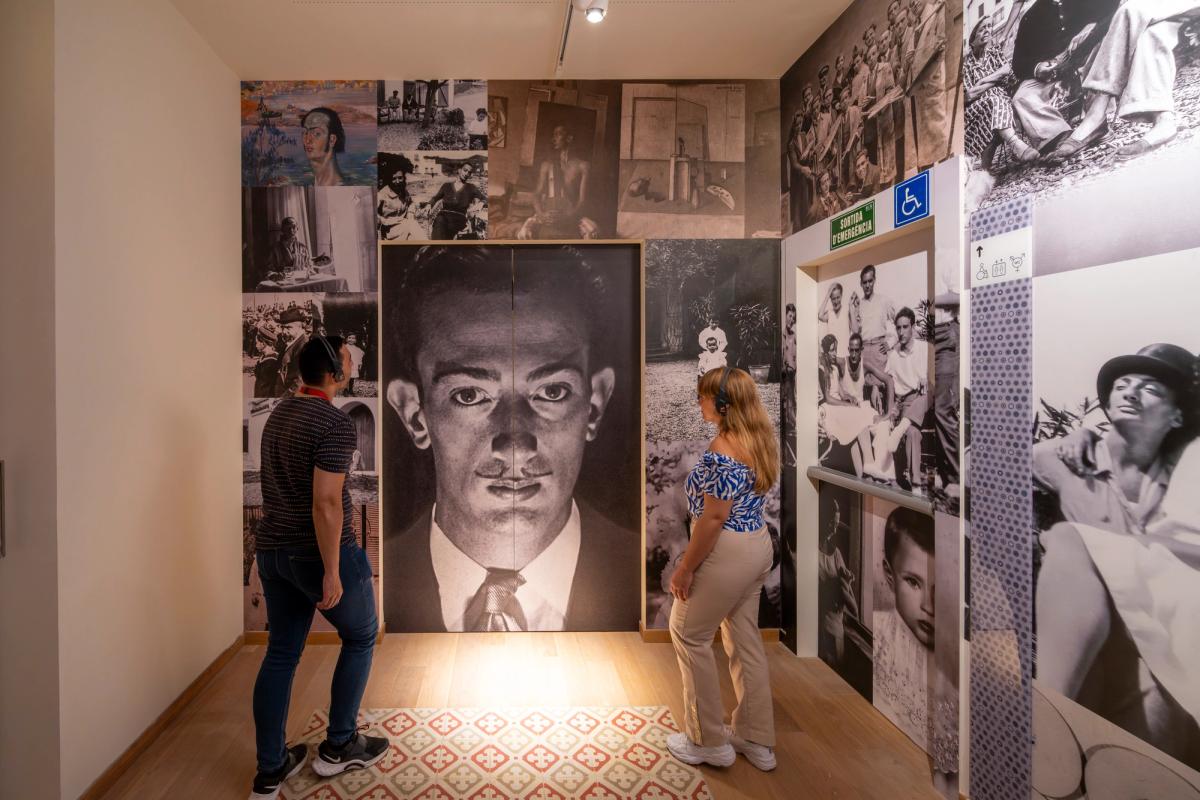According to Salvador Dalí, the seeds of his Surrealist vision were sown in his early childhood and adolescence. Now visitors keen to understand the importance of these formative years can do so at the newly opened Casa Natal Dalí in Figueres, Catalonia where the artist was born in 1904.
The grand, four-storey, 19th century apartment building at number 6 Carrer Monturiol, where Dalí and his family lived until he was eight years old, opened on October 20. The venue is organised as an immersive one-hour long audio visual experience.
“Figueres is where Dalí became who he was,” explains Eduard Bech, director of the Casa Natal Dalí. “And the Casa Natal Dalí is a place where visitors can understand his family relationships and early influences, as well as the importance of the local Empordà landscape on his art.”
The €4 million project is the culmination of five years of refurbishment and redesign—but it was first conceived nearly 30 years ago. In 1995 the then mayor of Figueres, Marià Lorca, bought the ground floor shop where Dalí’s father, a notary, had originally had his office, as well as the first floor space, where the family had their apartment.

The museum is located in the grand, four-storey apartment building where Dalí and his family lived until he was eight years old
Photo: Jordi Puig Castellano, 2023
The mission was to create a cultural space in which to commemorate Dalí. But it was not until 2017 that the rest of the building was purchased and funding was secured for the project, with work beginning the following year.
The result is a space that offers some intimate insights into aspects of the artist's practice. A visit starts with a small exhibition of five early works which predate his turn to Surrealism. Most powerful is a neo-classical 1925 portrait of his father in muted greys, brown and white, currently on loan from the Museu Nacional d’Art de Catalunya (MNAC) in Barcelona. There is also a looser, tender oil of his mother, a self-portrait in oils, and two family drawings, also 1920 and 1925, are all on loan from private collections until early 2024.
The aim of the Casa Natal is not, however, to function as a conventional museum. As Bech explains: “Our objective from the beginning was to bring something to the town that would enable people to understand Salvador Dalí.”
To achieve this, the team engaged in a “benchmarking“ process, he continues, “to determine what we wanted this space to be.” This involved “analysing all the Dalí spaces that already exist around the world – obviously [including] the Dalí Triangle here in the Empordà,” he says—referring to the nearby Dalí Theatre-Museum in Figueres, the Salvador Dalí House at Port Lligat and the Gala Dalí House-Museum at Púbol. “And also the Dalí Museum in St Petersburg, Florida.”
”We saw that none of them talked about Salvador Dalí the man,“ he says. “We decided that the Casa Natal was the perfect place to do that, from his private life to his public persona.”
The original family spaces at Casa Natal take visitors right back to the first years of Dalí's life. The narrated tour includes the five-room apartment where the Dalí family lived, complete with original Art Nouveau floor tiles, and the unchanged bathroom and galley kitchen. In the “galeria”—the windowed veranda the family used as a living room—projections of forks and spoons dance around a small wooden table, illustrating how the six year-old Dalí began drawing, using cutlery to draw ducks and geese.
Another major highlight is the austere bedroom where Dalí was born, recreated according to his own descriptions, with an antique wooden bed beneath a reproduction of Velasquez’s Christ.
There are also photographs, films, lenticulars and kaleidoscopic, mirrored panels illustrating Dalí’s later life from his relationship with his wife Gala, his friendships with Paul Eluard (Gala’s first husband), Federico García Lorca, and Luis Buñuel, as well as his advertising work.

Kaleidoscopic installations at the new museum provide new ways into his work and relationships
Photo: Jordi Puig Castellano, 2023
Finally, on the upper floors of the building, floor to ceiling, immersive projections portray the recurring motif throughout Dalí’s most famous works—the vast, wide open plains of the Empordà and the surreal rock formations, sounds and seascapes of the Cap de Creus (Cape Creus) Natural Park.
“Throughout Dalí’s work, the landscape that you see is the landscape of the Empordà or Cap de Creus,” Bech says. “He never stopped painting it, even when he was living elsewhere and it’s absolutely crucial to his work.”


